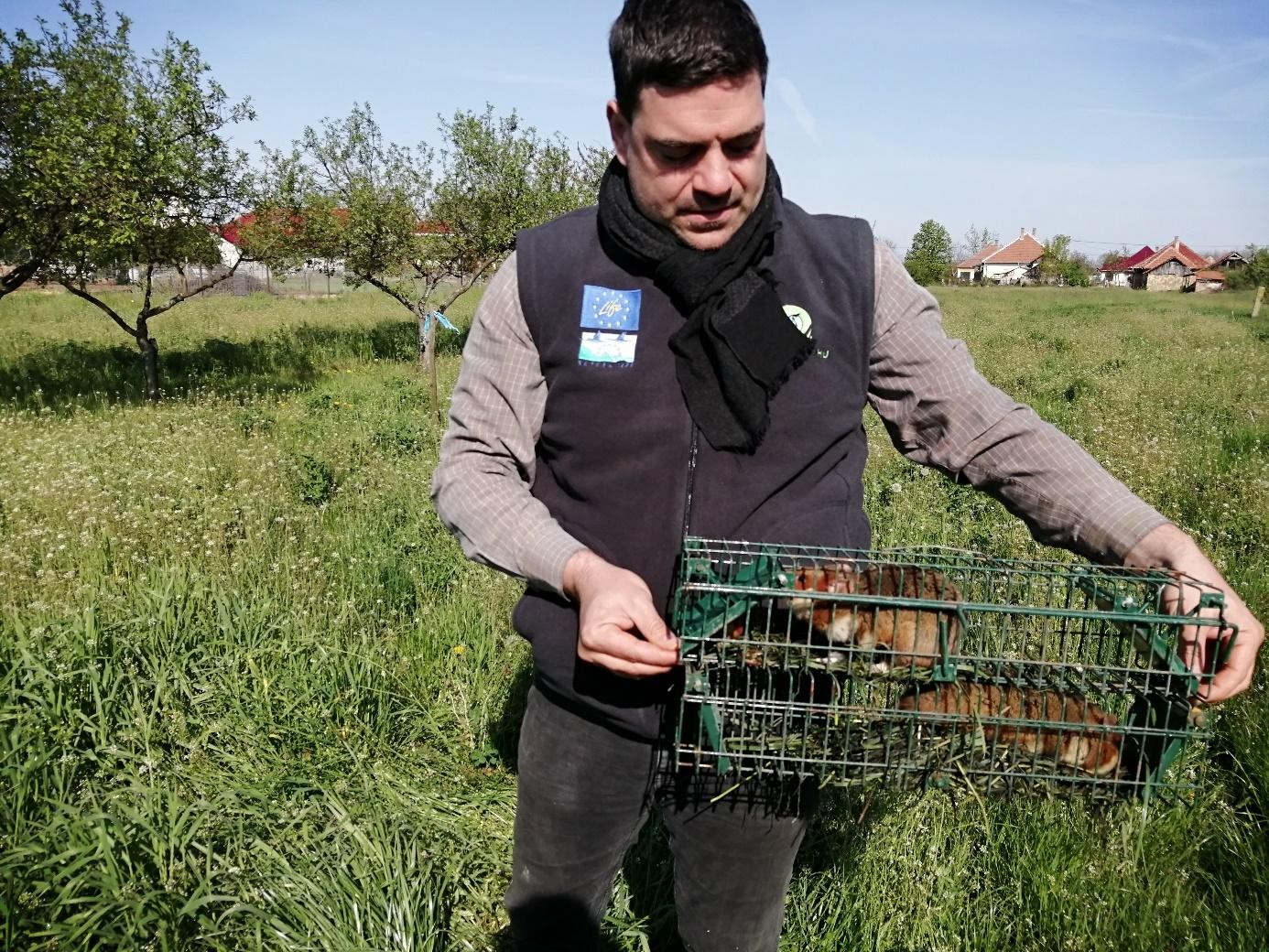Under pressure: population genomics in the Pannonian lineage of the Critically Endangered European hamster
Lajos Szatmári (HNHM); Gábor Sramkó (University of Debrecen); Anna Somogyi (HNHM); Tamás Cserkész (HNHM); Gábor Csorba (HNHM)
Field surveys revealed a significant population decline, with many previously known populations now nearly undetectable.
The Biodiversity Genomics Europe hamster case study
The common hamster is more than likely the fastest declining mammal species in Europe and is at risk of going extinct within 30 years. In 2020, at that time of the IUCN reassessment, despite the global trend, hamster populations appeared to be stable in the central-eastern part of Europe. Within this area, Hungary hosts the largest population, where the population size has displayed decade-long fluctuations during the last century. Approximately 12 years ago, hamsters started to colonise settlements in Hungary, they entered houses and caused damage in gardens. Using reference genome we envision a population genomic analysis of RAD-seq data detecting the origin of the urban-dwelling hamster populations and characterizing the population genetic structure of populations inhabiting settlements and agricultural lands (urban vs. rural hamster populations).
Key steps and goals of the study:
- Assessing genome-wide variation across populations: evaluating genetic distance between groups separated by major rivers.
- Urbanization’s genetic impact on hamsters: investigating genetic patterns and potential reduction in variation due to bottlenecks and drift in urban-dwelling populations.
- Connectivity and gene flow among neighbouring hamster subpopulations: insights gained through migration modelling.
- Effective population size monitoring using RAD-seq: characterizing genetic diversity and structure of hamster populations from Hungarian villages and agricultural fields. Applying the reference genome with RAD-seq to enhance accuracy. Identifying selection-influenced SNPs to pinpoint genes affected by urbanization.
Critical findings of the case study:
Field surveys revealed a significant population decline, with many previously known populations now nearly undetectable. This decline is striking as the species, once widespread in Hungary three years prior, now occupies only about one-third of its former range. A notable difference in population dynamics was observed on either side of the Danube River: a decline in the east and growth in the west. This divergence raises questions about potential genetic factors influencing these trends. The Danube River, the largest in the Pannonian Basin, acted as a significant barrier shaping regional genetic structure, whereas other major rivers posed less barrier. Concerningly, the species exhibited lower genetic diversity than even the rarest mammals.
Stakeholders:
Citizens, farmers, wildlife rangers of National Park Directorates, members of the Hungarian Chamber of Agriculture, researchers and students in universities, Grassland- HU LIFE project.
More information:
– BGE’s hamster case study at the Mammal Conference in Hungary
– Visual story: hamster time!





